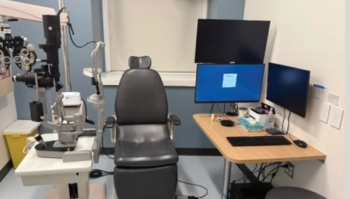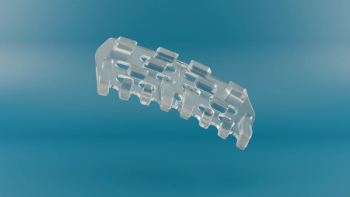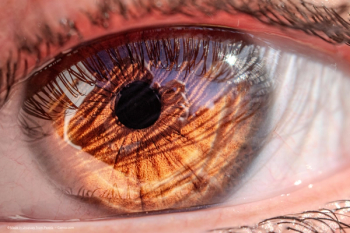
Glaucoma 360: Eyedrop targets and reduces episcleral venous pressure in glaucoma
Thurein Htoo, MS, MBA, CEO and co-founder of Qlaris Bio, took the podium at the New Horizons Forum at the Glaucoma 360 conference in San Francisco to discuss the performance of the company’s episcleral venous pressure eyedrop, QLS-111.
Qlaris Bio has released new data regarding QLS-111, a second generation of its episcleral venous pressure (EVP) eyedrop, and Thurein Htoo, MS, MBA, the company’s CEO and co-founder, provided an update during the New Horizons Forum at the Glaucoma 360 conference at the Westin St. Francis San Francisco on Union Square.
Numerous therapies are available to treat primary open-angle glaucoma (POAG) and ocular hypertension (OHT) by addressing intraocular pressure (IOP), uveoscleral outflow, and conventional outflow facility. However, another target remains unaddressed, Htoo pointed out.
“No treatment selectively targets EVP directly, and it is the largest component of the IOP,” he said.
QLS-111 is the second generation of the company’s initial formulation, QLS-101. The first foray into the glaucoma arena with QLS-101 rapidly went into first-in-human studies and demonstrated excellent safety and tolerability profiles and efficacy, which supported the potential utility of the ATP-sensitive potassium channel modulator platform as a complementary mechanism that selectively targets the EVP.
QLS-111 preliminary clinical data
High and low doses of QLS-111 were evaluated in a single-center investigator-initiated clinical study to determine safety, tolerability, and efficacy in 21 healthy normotensive volunteers over the course of 14 days.
Their collaborators, Htoo reported, found that “in patients who received low-dose QLS-111, a greater than 20% mean diurnal IOP reduction from baseline was observed, with a mean reduction of -3.5 mmHg from the baseline IOP of 16.7 mmHg.” This result reached significance (p = 0.003) compared with the vehicle control.
At the doses tested, QLS-111 was well tolerated with no stinging or burning upon instillation and no other ocular adverse events. Importantly, no clinically meaningful hyperemia was observed.
Because of this demonstrated IOP-lowering success targeting EVP and the excellent safety profile for treating POAG, there also may be a substantial benefit for QLS-111 as an IOP-lowering agent for patients in whom EVP has limited maximal pharmacotherapy, i.e., in normal tension glaucoma, which disproportionately affects Asian patients and for whom no therapies are approved on-label. It also has potential for patients receiving minimally invasive glaucoma surgery devices that shunt flow into the distal outflow and episcleral venous systems, Htoo pointed out.
Finally, the drug may help patients diagnosed with Sturge-Weber syndrome, who often suffer from severe, intractable glaucoma.
“Having demonstrated meaningful IOP lowering in normo-tensive subjects, QLS-111 presents a substantive opportunity to be the first approved IOP-lowering agent for patients with normal tension glaucoma. With its novel mechanism, it may also serve to be an ideal complementary therapy in other forms of glaucoma,” Htoo concluded.
Newsletter
Get the essential updates shaping the future of pharma manufacturing and compliance—subscribe today to Pharmaceutical Technology and never miss a breakthrough.













































